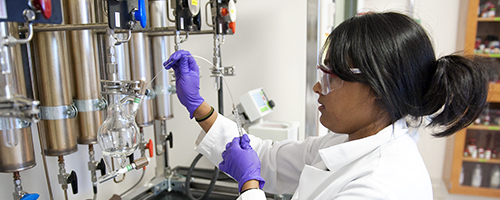Document Type
Article
Publication Date
3-15-2017
Publication Title
Journal of the American Chemical Society
Abstract
Coiled-coil domains can direct the assembly of protein block copolymers into physically cross-linked, viscoelastic hydrogels. Here, we describe the use of fluorescence recovery after photobleaching (FRAP) to probe chain mobility in reversible hydrogels assembled from engineered proteins bearing terminal coiled-coil domains. We show that chain mobility can be related to the underlying dynamics of the coiled-coil domains by application of a three-state “hopping” model of chain migration. We further show that genetic programming allows the effective mobility of network chains to be varied 500-fold through modest changes in protein sequence. Destabilization of the coiled-coil domains by site-directed mutagenesis increases the effective diffusivity of probe chains. Conversely, probe mobility is reduced by expanding the hydrophobic surface area of the coiled-coil domains through introduction of the bulky leucine surrogate homoisoleucine. Predictions from the three-state model imply asymmetric sequential binding of the terminal domains. Brownian Dynamics simulations suggest that binding asymmetry is a general feature of reversible gels, arising from a loss in entropy as chains transition to a conformationally restricted bridged state.
Volume
139
Issue
10
First Page
3796
Last Page
3804
DOI
10.1021/jacs.6b13146
ISSN
00027863
Recommended Citation
Rapp, Peter B.; Omar, Ahmad K.; Shen, Jeff J.; Buck, Maren E.; Wang, Zhen Gang; and Tirrell, David A., "Analysis and Control of Chain Mobility in Protein Hydrogels" (2017). Chemistry: Faculty Publications, Smith College, Northampton, MA.
https://scholarworks.smith.edu/chm_facpubs/23



Comments
Peer reviewed accepted manuscript.